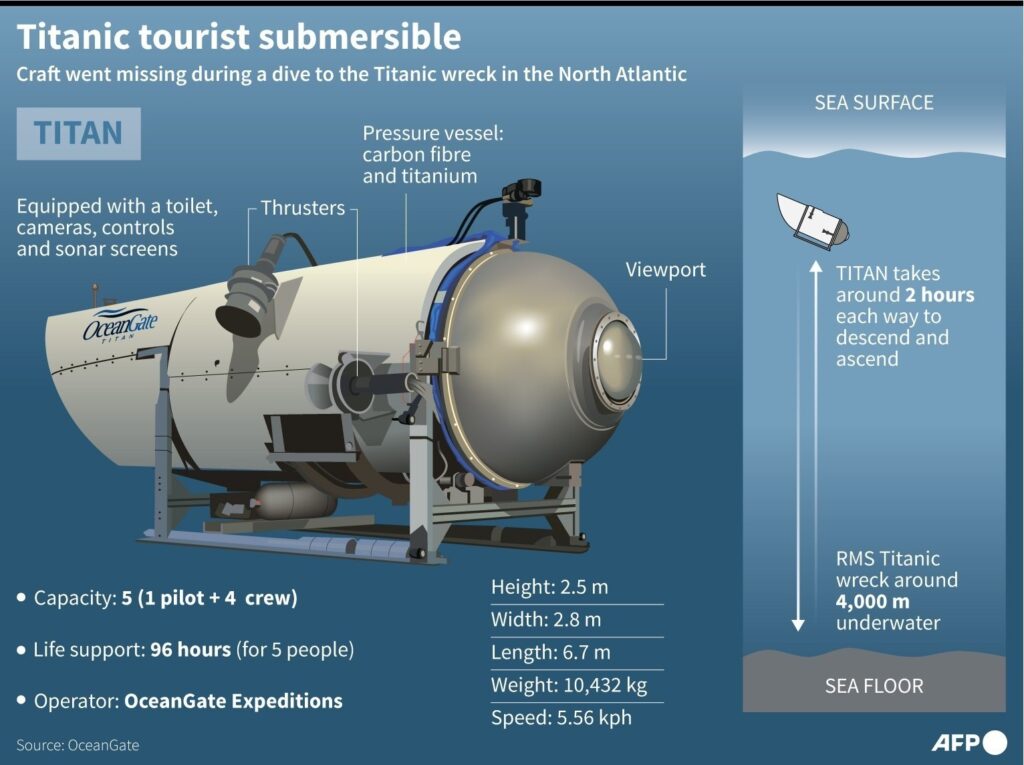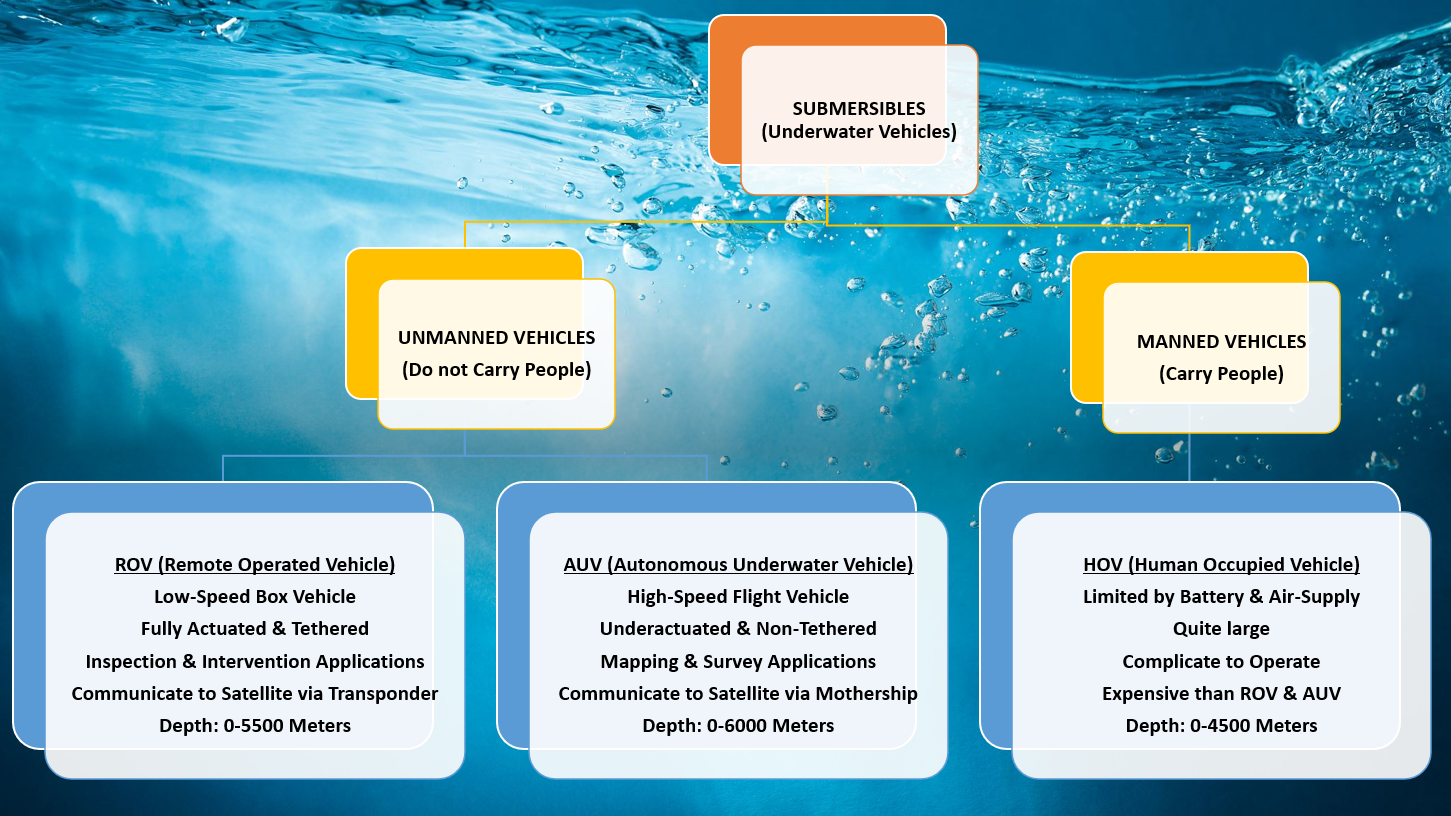I at this moment illustrate how submersibles differ from submarines. A four-day search expedition for the missing OceanGate Titan submersible has come to a tragic end. The ship reportedly suffered a catastrophic implosion en route to the wreck, which may have killed all five of its passengers instantly, probably in 20 milliseconds with an Atmospheric pressure between 375-410 (6000 psi) where the iconic ship ‘Titanic” is submerged deep inside the Atlantic Ocean. Some of us may consider the vehicle a submarine rather than a submersible.
Submersibles and submarines may look similar, but there are significant differences. Submersibles are typically small, unmanned ships used for exploration and research, while submarines are larger, manned, and designed for military operations.

What is Submersible?
A Submersible is an underwater robot that goes out to sea from a ship to record and collects information from the water column of the ocean and the seabed for scientific analysis. There are many different types of dive boats. There are also underwater robots that are remotely controlled in real-time or pre-programmed to travel pre-set routes. Some submarines, like the Missing Titan, can transport people to deep seas.
Submersibles, predictably, have played an important role in exploring and comprehending this last frontier. These modern ships, capable of reaching incredible depths and completing complex scientific experiments, have even begun to pluck out clues to the beginning of life and the genesis of our planet.
How are they distinguished?
Compared to submarines, Submersibles are very small, simple in construction, and equipped only for short-term immersion. The main difference between Submersibles and submarines is that submarines can leave and return to port under their power. Submersibles have very limited energy storage and cannot go out to sea or back. We need a mother ship that can be launched and retrieved.
Submersibles need to carry oxygen tanks typically sustainable for a few days. In contrast, most submarines can produce oxygen and can remain submerged for months at a time.
Records show that in 1578, English carpenter and gunner William Bourne designed the world’s first true submersible. But it wasn’t until 40 years later when Dutch physicist Cornelius Drebbel revised Bourne’s plan that human-powered submarines were born. Further efforts lead to the invention of The bathysphere (1930), Trieste (1953), Alvin (1964), etc in the journey of submersibles.
The following picture demonstrates the types of submersibles being used.

Remote Operated Vehicle
ROVs are underwater robots that are tethered and used for study, exploration, and imagery collecting further very helpful for data analytics/studies. ROVs are attached to the ship, allowing topside operators to send and receive control signals directly from the undersea vehicle. Many ROVs can also collect samples using a pilot-operated manipulator arm.
Autonomous Underwater Vehicle
AUVs are self-contained underwater robots that are used to explore the ocean. AUVs, unlike ROVs, are unattached from the ship and may conduct preplanned missions without direct direction from an operator i.e. following a pre-planned itinerary. An AUV takes high-resolution data that is kept within the vehicle and retrieved by researchers after the AUV has surfaced.
Human Occupied Vehicle
For a brief period, HOVs take a small team of scientists and pilots directly to the bottom. HOVs, like other submersibles, are outfitted with gear including lights, cameras, sensors, manipulator arms, and collecting devices. HOVs have made significant contributions to scientific discoveries over the years, notably the examination of the RMS Titanic catastrophe.
OceanGate “Titan”
The submarine was about the size of a minivan and carried five adults. The ship was scheduled to be submerged for about 10 hours, and five passengers had four days of oxygen at the start of the descent. The submarine has been missing since June 19, leading to a massive search thousands of miles across the North Atlantic.
On June 22, 2023, the ROV found the wreckage on the bow of the expedition’s destination, the wrecked Titanic. The ship is believed to have experienced a “catastrophic implosion” at some point during her voyage to the Titanic.
